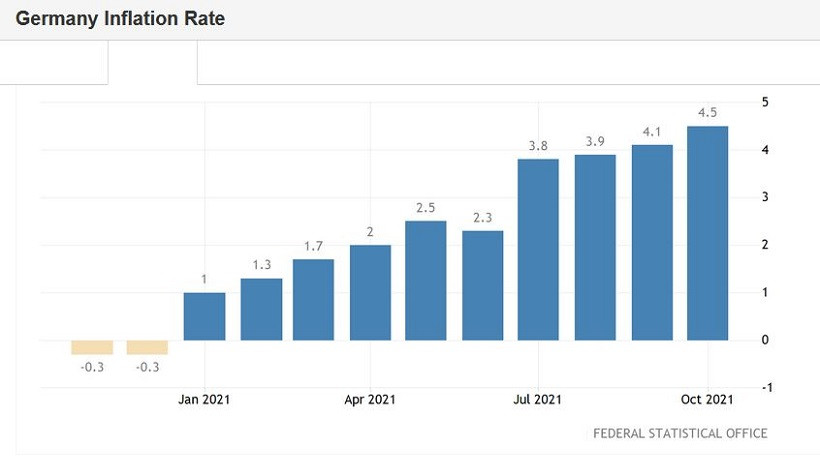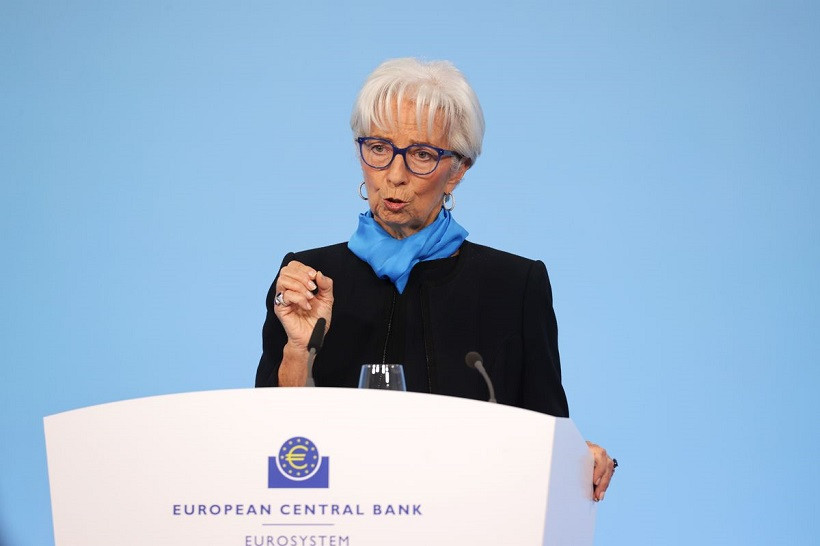Today is a busy day for the euro-dollar pair. The European Central Bank announced the results of the October meeting, Germany reported on the growth of inflation in the country, and the United States - on the growth of the national economy. Such diverse, but at the same time quite important events of a fundamental nature provoked increased volatility for the EUR/USD pair, which has been in a state of suspended animation in recent days.

The first emotional decisions of traders were not in favor of the US dollar. At the beginning of the US session, the EUR/USD pair shot up, updating the two-day price high (1.1648). Although just an hour before the upward momentum, the pair updated the week-and-a-half low, dropping to 1.1582. Such price flights are caused by contradictory signals of a fundamental nature. German inflation showed growth, the European Central Bank offset the value of this growth, and the US release completely "redrawn" the fundamental picture, exerting the strongest pressure on the dollar. This hodgepodge eventually turned out to be to the taste of EUR/USD bulls, who organized another corrective counteroffensive. However, will the bulls be able to maintain the set pace? Will they be able to settle above the 1.1670 mark this time (the upper line of the Bollinger Bands indicator on the D1 timeframe), in order to then overcome the resistance level of 1.1710 and settle within the 17th figure? There are no definite answers, even considering the current weakness of the greenback.
But let's start with the German statistics. The data released today, which were published simultaneously with the final communique of the ECB, reflected the growth of inflation in Germany. All components of the release were released in the green zone. In annual terms, the overall consumer price index came out at 4.5% with a forecast of growth to 4.4%. This indicator has been consistently growing for 10 (!) months, that is, since January of the current year. On a monthly basis, the indicator also exceeded the forecast values, ending up at 0.5% in October. At the same time, both in September and in August, this component came out at zero. The harmonized consumer price index similarly exceeded forecasts - both in monthly and annual terms. It is worth noting that German data quite often correlates with pan-European data, so we can assume that the October inflation growth in the eurozone will also be a breakthrough – once again.

EUR/USD bulls did not have time to take advantage of this fundamental factor. The head of the ECB offset the optimism of traders with her dovish theses. However, ECB President Christine Lagarde did not say anything new – she only refuted the hawkish rumors that were actively exaggerated in the market on the eve of the October meeting. The reason for such conversations was again inflation. Pan-European inflation updated long-term records in September, after which there were suggestions among experts that the ECB might raise the interest rate a little earlier than the designated 2024.
Timid assumptions eventually transformed into fairly stable expectations, which provided background support for the euro. However, today Lagarde put a bold end to this correspondence discussion. She stated that "market expectations of a rate hike are at odds with the views of the central bank itself." Actually, this phrase (almost verbatim) was voiced not so long ago by the ECB's chief economist Philip Lane, commenting on the increasing hawkish expectations. But the market reacted weakly to his words, apparently hoping for a "hawkish surprise" from the central bank.
But there were no surprises: Lagarde is still a supporter of the accommodative policy, as are most members of the Board of Governors. Speaking at a press conference, she stressed that the slowdown in PEPP purchases "is not a curtailment of incentives." As for inflationary trends, Lagarde also demonstrated "Nordic composure" here. On the one hand, she acknowledged that the phase of inflationary growth "will last longer than originally expected." But on the other hand, she reiterated the thesis that current trends are due to temporary factors, and medium-term inflation is still below the two percent target. In other words, Lagarde once again made it clear that the latest inflation releases will not encourage the members of the central bank to tighten the parameters of monetary policy. This is the key message of today's meeting.
The growth of the EUR/USD pair following the results of the October ECB meeting can in no way be correlated, in fact, with the results of this meeting. Lagarde did not sound any hawkish signals – she only stated the fact that the increase in inflation will last longer than previously expected. The pair's upward momentum is due only to the weakness of the dollar, which reacted to the failed data on the growth of the American economy in the third quarter.

US GDP grew by just 2 percent after growing by 6.7% in the second quarter. At the same time, most of the analysts surveyed expected the indicator to grow by 2.8% in the third quarter. Such weak results offset the optimism of dollar bulls regarding a possible increase in the Federal Reserve's interest rate next year. In addition, there have already been suggestions in the market that the central bank may delay the curtailment of QE until December of this year. Against the background of a darkened fundamental background, the US dollar index began to dive down, reflecting the general weakening of the US currency. The EUR/USD pair was no exception: the greenback is also losing its position here, allowing the euro to develop a corrective offensive. Even despite the dovish results of the October ECB meeting.
Thus, given such a contradictory fundamental background, there is no need to hurry with trading decisions on the EUR/USD pair. At the moment, bulls are testing the resistance level of 1.1680 (the upper line of the Bollinger Bands indicator on the daily chart), however, in order to consolidate success, they need not only to settle above this target, but also to overcome the resistance level of 1.1710 (the Tenkan-sen line on the weekly chart). In the wake of the general weakening of the greenback, EUR/USD bulls may approach the borders of the 17th figure – but whether they will gain a foothold above 1.1710 is an open question. Therefore, it is most expedient to take a wait-and-see attitude for the pair now, watching the emotional battles of traders from the side.
The material has been provided by InstaForex Company - www.instaforex.com